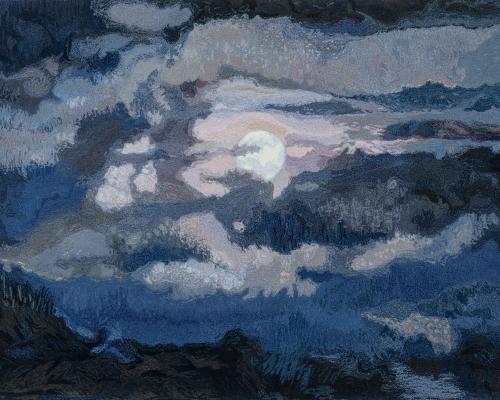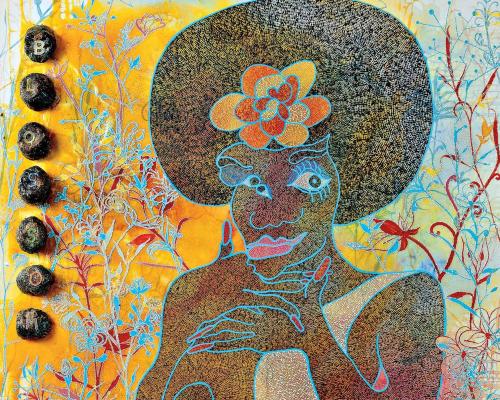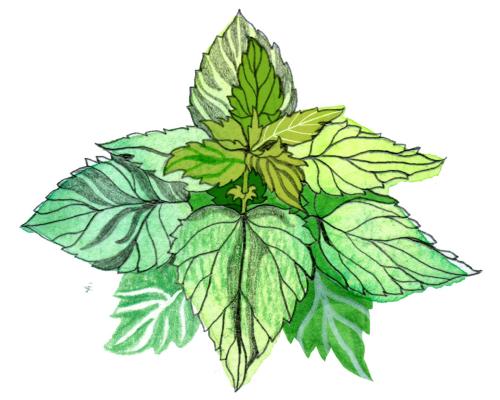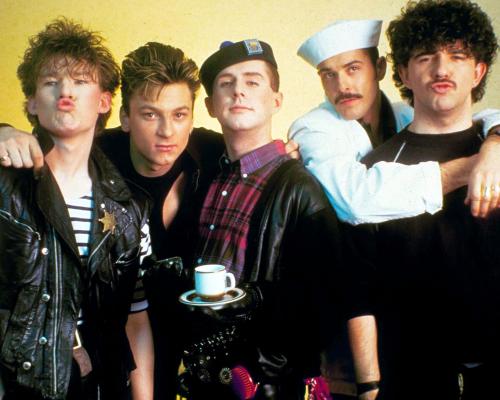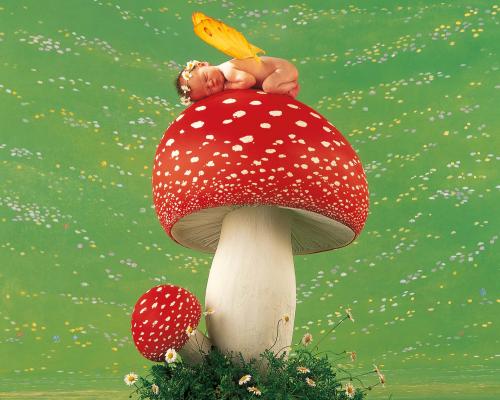
When Anne Geddes began shooting her famous photographs, she soon learned she would need a backup baby – or 20. “Connecting with a child who considers you a stranger is high stress,” she says. “I remember trying to shoot one baby sitting in a tank of water, surrounded by waterlilies. It took five babies to make it work. One of them was even called Lily, but she was not having a bar of it. She looked at me as if to say: ‘You think I’m getting in that water?’”
She describes the practicalities of one of her best-known shots, 1991’s Cabbage Kids. It shows twin brothers Rhys and Grant with cabbage-leaf hats on their heads, each sitting in an upturned cabbage, turning to one another with mild alarm. Geddes’ assistant had tied a balloon to a piece of string, lowering it between them and whipping it up the moment they turned. Geddes got the shot.
“That whole world has changed; that income has gone,” says the 68-year-old Australian from her home in Manhattan, New York. Technology has changed everything. She calls Cabbage Kids “authentic”: “The props were all real. It was all in my garage. It’s funny; with Photoshop and AI, it makes me sad to think that if you came to my work now, you might question whether it was real.
“I think original stories will always prevail. That’s why having people and humans behind the photographs is important. AI can’t replicate that.”
If you grew up in the 1990s, there is every chance that, like me, you tacked a Geddes poster to your wall. Babies upright in a flowerpot or a bucket, or gazing sleepily from a peony, a calla lily or a bed of roses. Some were dressed as bumblebees, others with little fairy wings, snoozing on a bed of crisp autumn leaves. The images are whimsical, otherworldly and sometimes plain weird. But they have that rare quality of appealing to children without being childish and have begun popping up again, often ironically, on social media.
They were disseminated initially not just on Hallmark greetings cards, but also on the cover of Vogue Homme, in a Dior advert and even in a 2004 book with Céline Dion (the best image shows the singer holding aloft a baby asleep inside an amniotic sac).
The height of that period, for Geddes, was appearing on The Oprah Winfrey Show: “She came out carrying two babies dressed as bumblebees and we shot up the New York Times bestseller list!” But for many millennials, the peak of her fame was the episode of Friends in which Elle Macpherson’s character, Janine, moved in with Joey and attempted to “girlify” his apartment using Geddes’ photograph Tayla as a Waterlily.
***
Geddes is striking, with silver hair, high cheekbones and bright skin, like Meryl Streep if Streep wore her cap backwards. She sits in front of a generic backdrop, warm, if a little reserved, speaking slowly and carefully about bumblebee suits and lily pads.
It’s almost 30 years since she created Down in the Garden, a series of photographs of babies in and around flora and fauna, some of which will appear in her first ever retrospective, at the New Art Museum in Tübingen, Germany, this month. Among the 150 images are identical triplets sleeping in the hands of Jack, a school groundsman, whose hands also appeared in her 1993 photograph of Maneesha, a baby born prematurely at 28 weeks. For years, people have written to tell Geddes they keep this hopeful image on their fridge.
Another photograph is of Tuli and Nyla. Geddes had two days in the studio, lots of babies and a giant Polaroid camera. “I had no props, but you need a vague plan when you work with babies, as you have to work quickly,” she says. When Nyla began fussing, Tuli rocked her and whispered into her hair. She grabbed the moment.
Geddes refers to these prop-less, slightly quieter pictures as her “classic work” and the babies in flowerbeds as “what they know” – “they” being people like me, who grew up with them. “After Down in the Garden came out, it was all pots, pots, pots,” she says. “It was like I had a flowerpot tattooed on my forehead. People always want the flowerpots! But I’m like: I do other things. And what I’m looking forward to is that people will see the other work. This exhibition is really the first time anyone has asked me to do this.”
Despite selling more than 10m calendars and almost twice as many copies of her seven coffee‑table books (for context, EL James shifted fewer copies of Fifty Shades of Grey in its first decade), Geddes hasn’t always been treated with reverence in an industry dominated by single-name stars such as Bailey and Rankin. Is it snobbery? “It’s just a bit of a guy industry,” she says. “[Men] would say: ‘I used to shoot babies, but then I moved on to landscapes.’ I was always puzzled. To me, babies are magical.”
The response to the baby pictures has sometimes been frustrating, she says. “People said I was a one-shot wonder. I’m just as interested in shooting pregnant women or new mothers. It’s just people don’t want to talk about that as much.” With some earnestness, she says she now prefers photographing anything pertaining to the “promise of new life, the miracle of pregnancy and birth”; she hopes the exhibition will draw attention to that. “I’ve found that once the Europeans say: ‘This is amazing,’ then the Americans are like: ‘We want this, too.’ It has to be that way round.”
Geddes was born in 1956 and grew up on a 10,500-hectare (26,000-acre) ranch in Queensland alongside four sisters. They were country kids who attended a two-room primary school. Photography wasn’t a big part of her life: “I only have three images of myself under two and none of me as a newborn.”
As a teenager, she subscribed to Life magazine and became fascinated by the idea of telling a story through an image. Still, she lingered on the periphery of photography, going to work in television, where she met her husband, Kel. It was in those corridors that she came across the “magic” of the darkroom.
Shortly after they met, the couple moved to Hong Kong, where Kel was running a new TV station. “Then we got married and I thought: I’ve got a roof over my head, now’s the time to pick up a camera.” She began putting up adverts in supermarkets, offering to photograph families and children, traipsing around their gardens and homes with a Pentax K1000 she borrowed from her husband.
When she was back in Australia and pregnant with her second daughter, now 40, Geddes began taking her classic baby pictures. She realised that, in a studio, she could control everything. She started taking photos for new parents, spending months creating elaborate sets in her garage and trying out different props.
A lot of the shots came about by accident. One day, a six-month-old called Chelsea was brought in for a portrait and Geddes spotted an empty flowerpot in the back of the studio: “We just popped her in there.” To keep her comfortable, she lined the pot with fabric. After a few months, she sent a collection of these images to a small greetings card company. That was that.
At the beginning, she would put a call out for babies and take “whoever came through the door”. But she learned to be discerning. “Under four weeks is good. If they’re full of milk and warm, they’ll sleep.” She also liked working with six- and seven‑month-olds, “because they’re not mobile, but suddenly they’re sitting and have this whole new perspective. Also, their heads are too big for their bodies, which is funny.”
“The more you charge [for a portrait], the more they want you to make magic with a two-year-old who is having a bad day,” she says. As she became well known, “people began sending in photos of their babies, or rang from the labour ward in tears saying: ‘I’ve just had the most wonderful baby.’ I was just like: ‘OK, yup, sure, let’s go.’”
The images that appeared in calendars, posters, books and magazines were always used “with the permission of the parents”, she says, and the parents were always on set. “To me, a naked newborn baby is perfect,” she says. “They are us, essentially good people, at the start of their lives, and that’s what I love about them. That’s what I was trying to capture. You look at these tyrants that are running rampant [in politics] and think: they were once newborns. What happened? Why didn’t your mothers just tell you to sit down and behave?”
Her main inspiration is May Gibbs’ 1918 book Tales of Snugglepot and Cuddlepie, about little brothers who went on intrepid adventures in the Australian bush: “Photographers have to have their own visual signature. This became mine.” Her success is unusual, given how kitsch her images are. “This subject of mine is not deemed to be art and that’s been evident throughout my career,” she says. But that was also the point. “It was meant to be a children’s story, not serious.”
Does she think it would be harder to make her images now, in the digital era, because of privacy concerns? She says she doesn’t think the web has affected her work in that way: “I know a lot of people talk about having their babies online, or not having them online, but this sort of work is not exposing the babies personally.”
Geddes still refers to her images by the name of each baby, partly because she is still in touch with some of them. She recently put out a call, hoping to reunite with the babies, now in their 30s, many of whom are parents themselves.
After we speak, I go to bed and begin scrolling through pictures of my own baby, asleep in the room next door. We love looking at our own babies, but why do we like looking at other people’s, too? We don’t always, says Geddes. She once came close to winning a big portrait award in New Zealand. “I remember the head of Kodak in New Zealand coming up to me and saying: ‘Thank God you didn’t win. How could we have a baby on the boardroom wall?’”
• Anne Geddes’ retrospective exhibition, Until Now, runs from 16 August until 21 September at Art 28, Neues Kunstmuseum Tübingen, Germany


